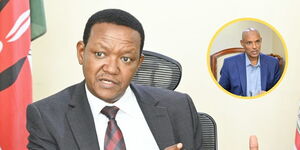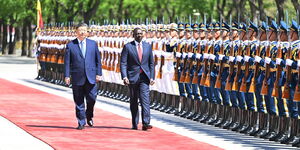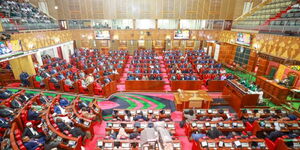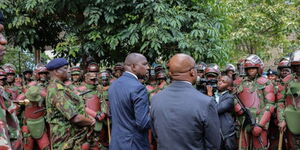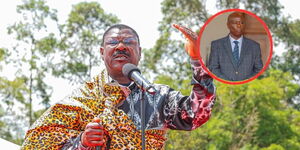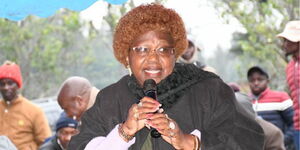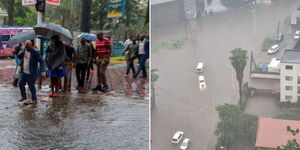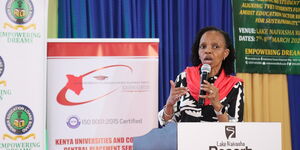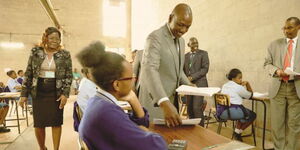A day before exactly 30 marking years since the rally in Nairobi's Kamukunji grounds that birthed the Saba Saba movement, activists are rallying together to make their voices heard.
Several civil society groups as well as veteran members of the Saba Saba movement and activists have planned a demonstration dubbed 'Saba Saba March for Our Lives' along Harambee Avenue in the capital on Tuesday, July 7.
The protest is centered on a single demand by the protesters; full implementation of the 2010 Constitution.
They argue that to secure gains fought for by the Saba Saba movement, implementation of the Kenya 2010 Constitution needed to be done to eradicate corruption, negative ethnicity and extra-judicial killings among other ills afflicting society today.
With a history of protests in Kenya being dispersed by police using force, bullets and teargas, prominent activist Boniface Mwangi was among those who sought assurances from Inspector General of Police Hillary Mutyambai that the protest would not be interrupted.
"On Tuesday, peaceful citizens will take part in Saba Saba March for Our Lives. You must ensure the National Police Service respect article 37 of the constitution, the right, to assemble, to demonstrate, to picket, and to present petitions to public authorities," Mwangi wrote.
One of the veterans of the original Saba Saba movement, renowned lawyer John Khaminwa, told Kenyans.co.ke that he supported the calls to focus on the implementation of the 2010 Constitution.
Khaminwa was detained on multiple occasions alongside opposition veterans Kenneth Matiba, Charles Rubia and Raila Odinga as they agitated for a return to a multi-party system in Kenya.
Khaminwa stated that many Kenyans, particularly the younger generation, were unaware of what it took to secure various freedoms they were enjoying and were taking it for granted.
He noted that the democratic space and freedom enjoyed by Kenyans could not be compared to the situation under former President Daniel Arap Moi's regime in the 80s and 90s.
Watch a recap of the July 7, 1990, Saba Saba protest below:
{"preview_thumbnail":"/files/styles/video_embed_wysiwyg_preview/public/video_thumbnails/4KXZRjU1ZGY.jpg?itok=XjwDM1iX","video_url":"","settings":{"responsive":1,"width":"854","height":"480","autoplay":0},"settings_summary":["Embedded Video (Responsive)."]}
"Right now, you are absolutely enjoying the benefits from the movement. Saba Saba movement was about unity of purpose.
"It did expand the freedom space in Kenya considerably because it abhorred tyranny and valued democracy and liberty," he explained.
Describing the Kenya 2010 Constitution as one of the most progressive in the world, Khaminwa urged President Uhuru Kenyatta to shift focus away from the Building Bridges Initiative (BBI) report to instead concentrate on fully implementing the 2010 Constitution.
"I want you to quote me on this; Khaminwa does not support the BBI. I oppose it completely.
"If President Uhuru wants to leave a legacy he should take charge of full implementation of the 2010 Constitution which is one of the most progressive in the world. Other countries are even borrowing parts of it and implementing in their countries.
"I agree that there are some rogue politicians but I don't believe BBI is the way to deal with them. Let's focus on implementing what is a very beautiful Constitution," he maintained.
Khaminwa asserted that a lot of the issues Kenyans were dealing with would be non-issues if the constitution was respected and implemented, noting that it created strong institutions along with proper checks and balances.
Rubia, Matiba and Raila were arrested by police just four days before they were expected to address a massive rally at Kamukunji Grounds demanding an end to single-party rule.
Their supporters, however, did not let this dampen their spirits and made their way to the grounds in the thousands on July 7,1990, officially birthing the movement.
Several of those who attended were killed in clashes with police while others were seriously injured and arrested.
Their agitation, however, set the stage for the repeal of Section 2A in 1991 marking a return to multi-party politics and expanding the country's democratic space.

